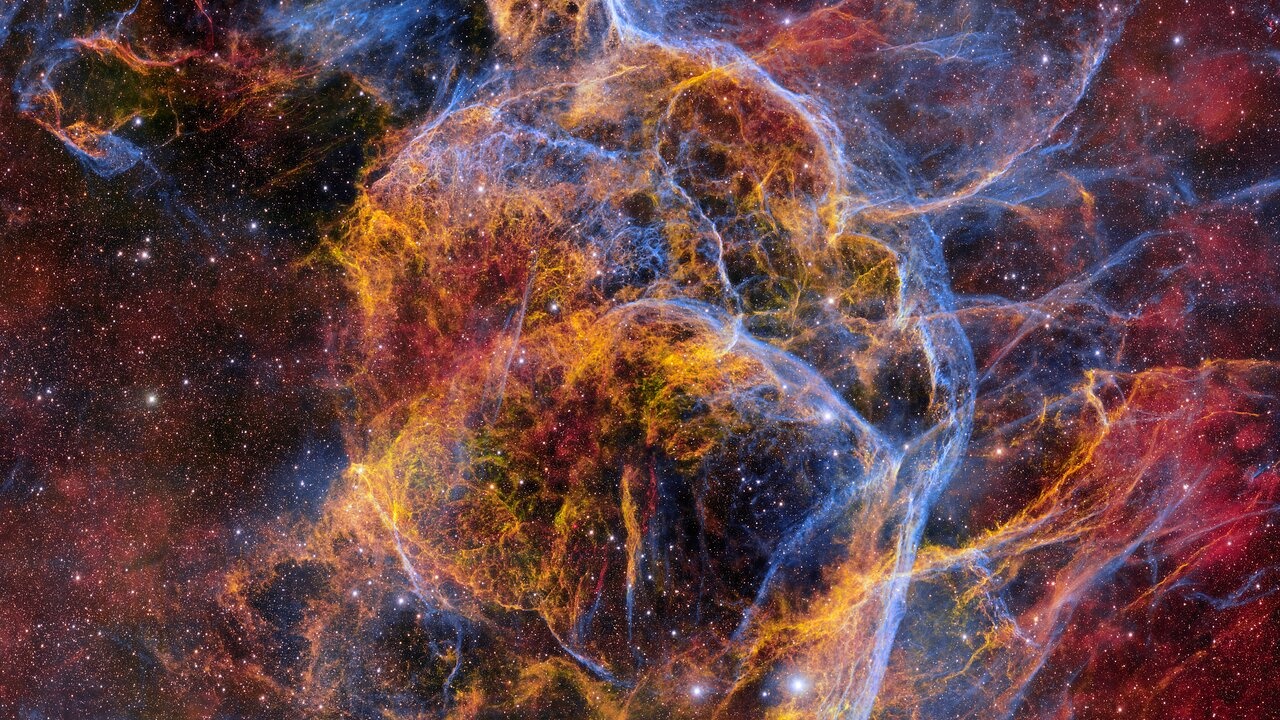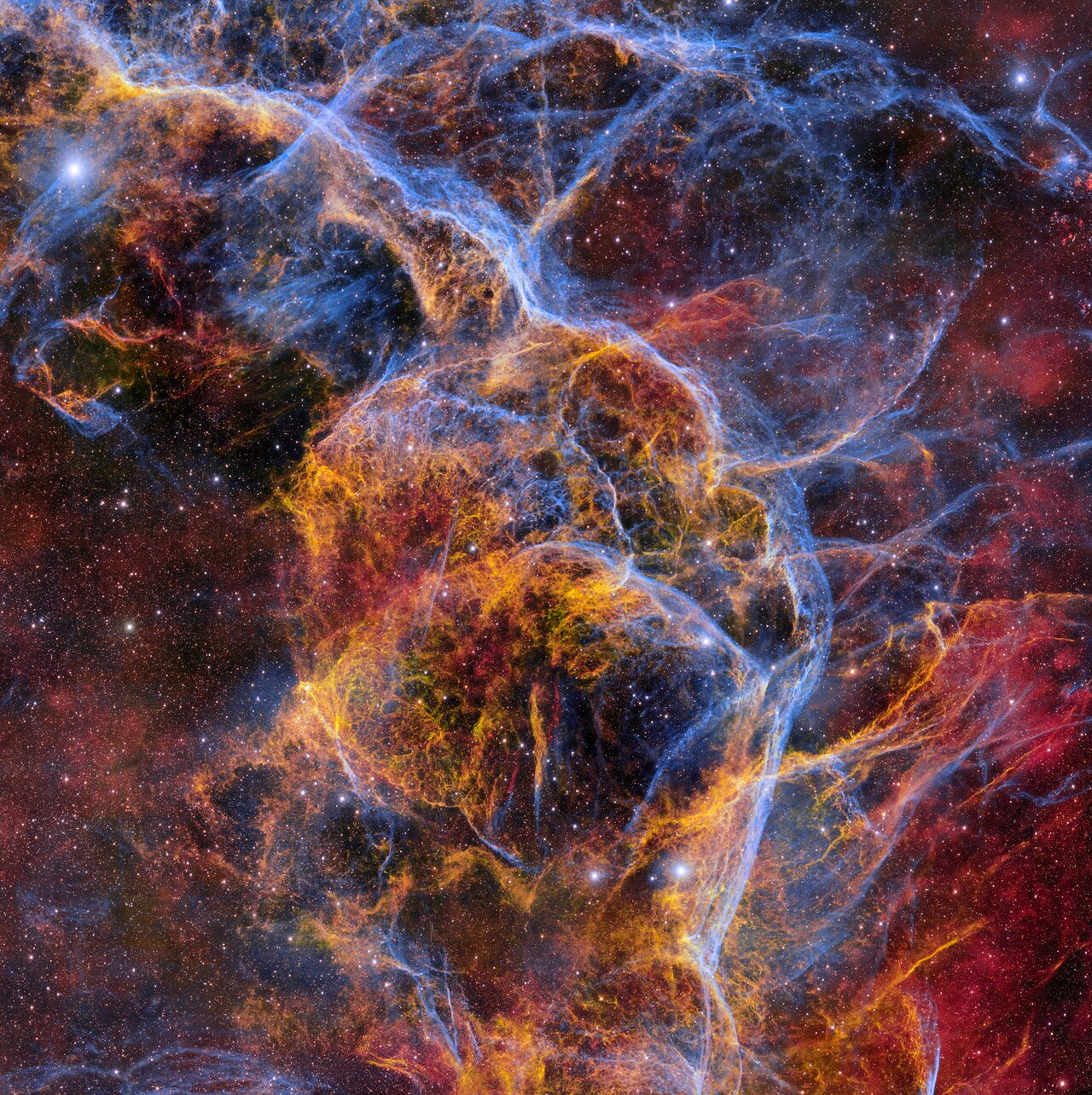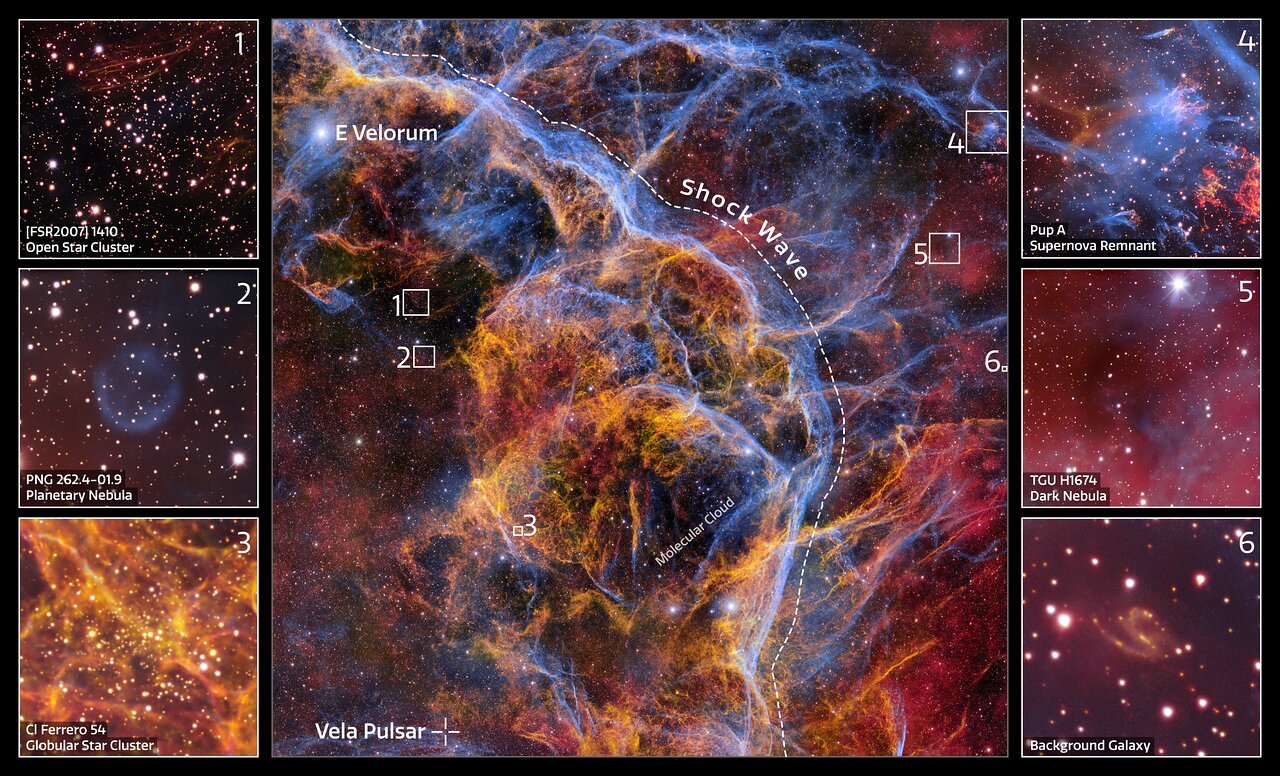
This billowing mass of dust filaments and gas tendrils stretching across 100 light-years of space like delicate lace is the Vela supernova remnant — scattered ashes of a star that exploded about 11,000 years ago.
The image was acquired by the Dark Energy Camera (DECam), which is mounted on the Victor M. Blanco 4-Meter Telescope at the Cerro Tololo Inter-American Observatory in Chile. DECam was originally designed to conduct a survey of distant galaxies to measure the strength of dark energy as it accelerates the universe's expansion and draws those galaxies away from us. On the completion of that survey, however, DECam has been used in more general fashion. It is one of the most powerful wide-field instruments ever built, and this image of the Vela supernova remnant is proof of its capabilities. It's in fact the largest image ever released by the camera at 1.3 gigapixel (1.3 billion pixels) in size. For comparison, a top-of-the-line smartphone might have a 48 megapixel (48 million pixel) camera.
Related: Pulsar surprises astronomers with record-breaking gamma-rays

The image has to be large to capture all that detail across such a large swath of sky. As mentioned, the Vela supernova remnant is a nebula that is about 100 light-years across. Because it's about 800 light-years away from us, it means the Vela supernova remnant spans an area on the celestial sphere 20 times larger than the angular diameter of the full moon (which is 31 arcminutes, or half a degree across in the sky).
The Vela supernova remnant itself is of crucial astronomical importance. It gives us a good look at the late stages of the development of such a remnant, and offers insight into how material blown out by the supernova gradually disperses into the interstellar medium, which is the thin mist of gas that fills the space between stars. The shockwave from the ancient stellar explosion that formed the Vela supernova remnant is still expanding into space, where it is colliding with the interstellar medium and compressing it, creating the delicate filaments we can see in the image. Absorption lines from elements like calcium, carbon, copper, germanium, krypton, magnesium, nickel, oxygen and silicon — many of them ionized and doubly ionized — have been detected in the supernova debris as well. These are heavy elements forged either by fusion processes within the star before it exploded, or by the ferocious energies unleashed by the explosion itself.

A supernova doesn't just spew a star's guts into deep space; it also leaves behind the dead star's core, now compacted under gravity into an ultra-dense object just 10 or 12 kilometers ( about6 to 8 miles) across. This is called a neutron star.
Such an object is usually born spinning many times per second, flashing radio beams from its poles like a cosmic lighthouse. We call such objects "pulsars," and indeed one lurks at the heart of the Vela supernova remnant that radio telescopes have clocked spinning at a dizzying rate of 11 rotations per second.
The Vela pulsar is one of the closest pulsars to us, and is blowing what's called a "pulsar wind nebula," which is a smaller nebula inside the larger supernova remnant formed of charged particles emanating from the pulsar and impacting circumstellar material ejected by the obliterated star as well as the wider interstellar medium. In a way, the remnant and the pulsar wind nebula are like a nebula within a nebula, a-la cosmic Matryoshka doll. Given that it is formed of energetic particles, a pulsar wind nebula tends to be more detectable in X-rays and gamma rays.
Even the constellation that the Vela supernova remnant lies within has an interesting history. The constellation is Vela, the Sails, but once upon a time this area of sky was part of a much larger constellation called Argo Navis, which is the name of the Greek mythological ship that took Jason and the Argonauts in search of the Golden Fleece. This southern constellation was so huge as to be unwieldy, so in 1755 French astronomer Nicolas Louis de Lacaille split the Argo Navis into three smaller constellations: Carina the Keel, Puppis the Poop Deck (or stern) and Vela, the Sails.
Those three constellations still exist to this day, but judging by DECam's image, perhaps in the end the Argonauts – we astronomers – did indeed find our Golden Fleece in the shape of the Vela Supernova Remnant.







